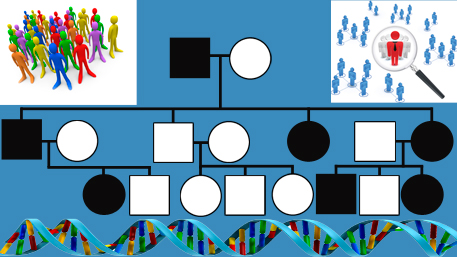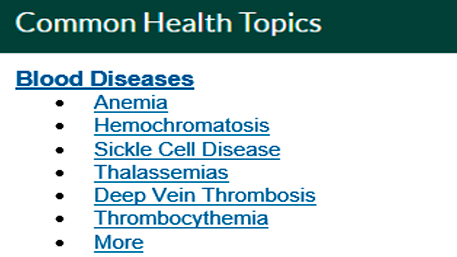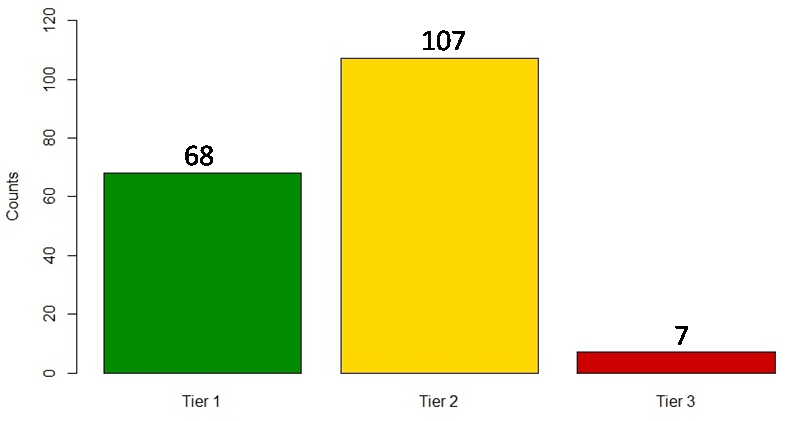Search Results
10 results for cancer
Stimulating Implementation Science in Genomics and Precision Medicine for Heart, Lung, Blood and Sleep Diseases: The Case of Familial Hypercholesterolemia

Implementation science is an emerging field of scientific inquiry that has been increasingly applied to genomics and precision medicine. In our recent papers on the state of scientific publications and NIH funding, we have identified areas of growth and limitations of the field and called for more training and workforce development for implementation science in
Posted on byPrecision Medicine in Action: How well does cascade screening for hereditary conditions work in the real world?

An important component of precision medicine is the identification, through genetic testing, of people who are at elevated risk of disease because of pathogenic germline mutations. Cascade screening involves contacting relatives of patients with certain hereditary conditions to help inform, manage, and identify those who may be at increased risk. A systematic scoping review on
Posted on byTracking the Translation of Genomic Discoveries to Population Health Benefits: Connecting the Dots from Investment to Population Health Information

In March 2018, the CDC Office of Public Health Genomics launched the Grant Database (GDB), an extension of the Public Health Genomics Knowledge Base (PHGKB). GDB “connects the dots” between funding investment and publications on translation, implementation, and evaluation of population health impact of genomics and precision medicine. We launched PHGKB in 2016, as an
Posted on byGenomics and Population Health Action: The Collaboration Continues!

In March 2018, I attended the third annual meeting of leaders of the Genomics and Population Health Action Collaborative (GPHAC). GPHAC was formed late in 2015 under the auspices of the National Academy of Medicine’s Roundtable on Genomics and Precision Health to foster collaboration of more than 50 diverse stakeholders, including state public health programs,
Posted on byHLBS-PopOmics: NHLBI and CDC partner to launch a public health genomics knowledge base for heart, lung, blood, and sleep disorders

Timely and targeted dissemination of published research findings is an important step in accelerating the pace of turning discovery into health. To achieve this goal in human population genomics, the NHLBI has partnered with the CDC Office of Public Health Genomics (OPHG) to launch a heart, lung, blood, and sleep disorders knowledge base in population
Posted on bySaving a Million Hearts: One Heart at a Time!

Cardiovascular disease (CVD), principally ischemic heart disease and stroke, remains the leading cause of U.S. deaths for men and women and all races and ethnicities in spite of major progress in its prevention and treatment. CVD is also the greatest contributor to racial disparities in life expectancy. In 2012, 120 public and private partners and
Posted on byDear John, There’s no point in waiting any longer. Let’s call it quits…

In 1999, Dr. Francis Collins, director of the Human Genome Project, provided a bold vision for what the practice of genomic medicine might soon look like. Collins described the case of a hypothetical man named “John,” a 23 year-old smoker living a decade into the future in 2010. “His substantial risk of contracting lung cancer
Posted on by 4 CommentsWork in Progress: Classifying Evidence-based Genomic Applications for Practice and Prevention

In our 2015 paper,“Prioritizing genomic applications for action by level of evidence: A horizon-scanning method,” we proposed a systematic scanning method that assigns genomic applications to “tiers” defined by availability of synthesized evidence. Because of the amassed evidence on the validity and utility of genomic tests and related technologies, we suggested that researchers, policy makers,
Posted on byWhat do women (and men) want? Parents weigh in on genetic testing for rare diseases in children

Genetic testing in children has traditionally focused on conditions with clinical actionability or utility. However, parents may want to know whether their child is at high risk of a rare disease even if a treatment doesn’t exist. A newly published article reports on a study conducted by researchers at RTI International and the University of
Posted on byGenomics and Obesity: We Need Both Population and Individualized Approaches in the Prevention and Management of Obesity

Obesity is a serious, global public health problem that has increased markedly in the last few decades. As of 2016, 795 million people were estimated to have been affected. Obesity is associated with leading causes of death worldwide—such as diabetes, cardiovascular disease, and cancer—making the search for effective weight management strategies a global priority. Obesity
Posted on by 2 Comments

